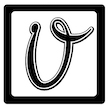Introduction to Marketing in Art : Connecting to Art Lovers with One Killer Question!
The greatest politician, businessmen, activists, marketers and influencers in the world engage with their followers around one killer question.
“What do you want?”
Asking this question in the right way, breaking it down into smaller parts and understanding the answer, is vital to your success.
One great example of someone who uses this question is Tyrion Lannister, a fictional character in the Game of Thrones. A dwarf, who thrives, despite having no military skill, army, riches or magical powers because he use a process vital to marketing. He makes sure he know what his target audience wants.
Mapping out and grouping your customers, and then understanding what your customers want, is vital to succeeding. If you can talk to people about things that they care about and address their most pressing issues they will automatically move towards you.

Understand there is one thing all Art lovers love more than Art! Artists!
People don’t really flock to the Louvre in Paris for Mona Lisa, or to the Prado in Madrid for the Guernica, or to the Rijksmuseum in Amsterdam for the Nightwatch.
They come to see Leonardo, Picasso and Rembrandt. They are interested in the artists and curators.
They are interested in people, they are interested in you!
You don’t have to be fake – just tell your story with IMPACT!
Artists who succeed, like Warhol, Dali, Hirst, Abramovic and Banksy have perfected the art of showcasing themselves as a brand. They remain authentic and true to themselves, while having a deep understanding of their public.
All successful art professionals I know, whether artists, curators, galleries or commercial photographers, instinctively understand this and tell their stories with a real punch!
Unfortunately, I often see artist websites, where the artist and their story, their brand, is entirely missing. But what should you be communicating?

Why it all starts with mapping out your clients
Marketers talk about creating a customer/audience avatar or profile or persona, that embodies the characteristics of different types of buyers so you can craft your product, selling process and messages to them. It’s a really useful tool to help you reframe your thinking from the perspective of your clients.
You can go into a lot of details and map out hundreds of different things (goal, values, age, drivers, barriers, objections, pain points, challenges, life stage, gender, age, education, political views, marital status, age of children, location, the books they read….)
But..to get started you can keep it simple –

Be ambitious in who you target! Organize your clients by budget.
Art is high value businesses where customers pay huge sums for your taste, your eye, your ability to do something extraordinary as you interpret color and light.
One of your objectives is to attract high paying clients, so begin by breaking down your current and potential customers by their budget, how much they are willing to spend. Make sure to include budgets that may be beyond what you are achieving right now. The sort of customers you want to attract.
Also, use common sense to group target clients
Include at least one other characteristic of your target clients that makes sense for your situation. Perhaps there is a difference between couples and single people, or tourists vs locals, (if you are an artist) galleries vs collectors, or maybe you sell fine art photography and also works as a commercial photographer (very different markets).
Now you have enough to get started. Identify the most important groups (so perhaps medium spending tourists and high spending couples and commercial work) for whichever groups you think are most important, ask yourself two questions.


How do your target collectors/customers see themselves?
Understanding how collectors see themselves gives you an insight into their motivations for buying art. Someone who see themself as a savvy investor will be looking reassurance that the price of the art they buy will rise. Someone who see themselves as a taste leader will seek out art that is new and through provoking, others may be loyal supporters and cheerleaders for artists, and still others may see themselves mainly as home-makers, looking for something that fits their general aesthetic.
What experience do your target collectors/customers want?
Every major purchase is a journey, and understanding what kind of experience your customers want can help you deliver the experience they are is seeking. You just need to be aware of it.
If your collectors are looking for an intellectual stimulation then write copy that speaks to them, if they are fascinated by the creative process then maybe use video to bring them into your studio, if they want to become part of a community invite them onto relevant Facebook groups.
